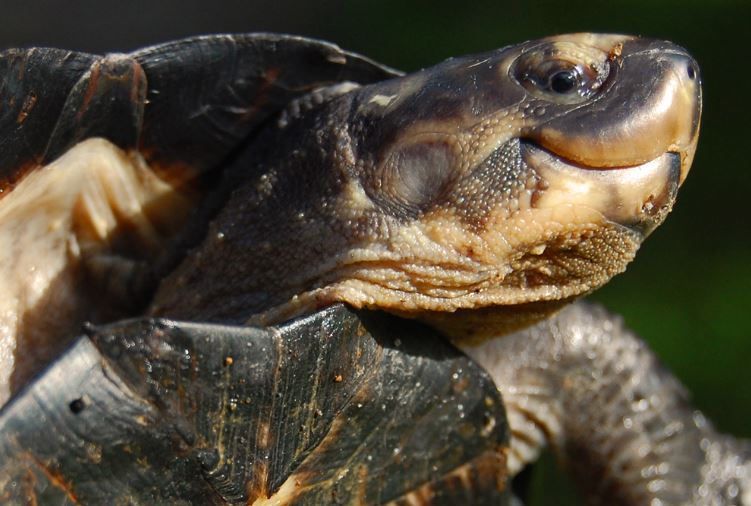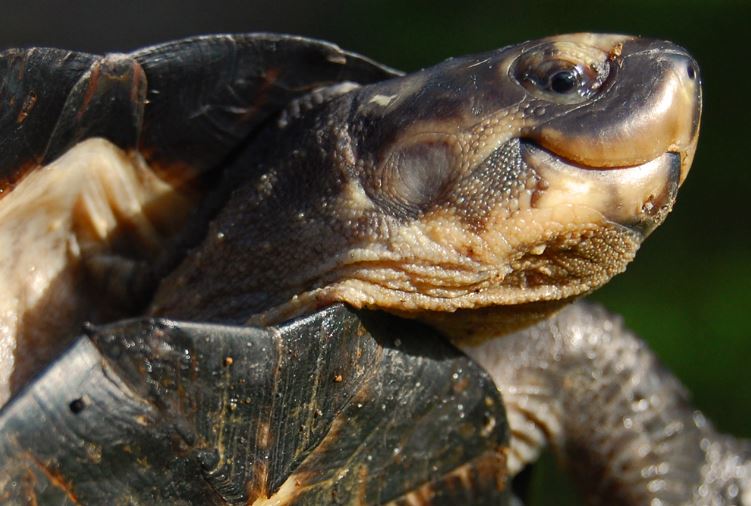So you’ve got a pet turtle, huh? Well, let’s face it, these little creatures can be quite intriguing with their slow and methodical movements. But have you ever wondered what your turtle’s actions actually mean? From the way they swim to how they interact with their environment, each behavior holds a clue to your turtle’s well-being and emotions. In this article, we will explore the fascinating world of turtle behavior and unravel the mysteries behind their actions, helping you develop a deeper understanding of your shelled companion. So, get ready to decode the secret language of your pet turtle and uncover the hidden messages it’s trying to convey.
Understanding Turtle Behavior
Turtles are fascinating creatures, and understanding their behavior is key to providing them with the best care possible. By observing your pet’s actions and decoding their body language, you can gain insight into their needs and overall well-being. Additionally, there are different types of behavior exhibited by turtles, each serving a specific purpose. Let’s delve into the world of turtle behavior and explore what your pet’s actions really mean.
Observing Your Pet
Observation is an essential skill for any turtle owner. By closely watching your pet, you can discern various behaviors that offer valuable clues about their physical and emotional state. Here are some important aspects to pay attention to when observing your turtle:
Body Language
Just like humans, turtles have their unique ways of expressing themselves. Pay close attention to their body language, including the position of their head and limbs, as well as any movements they make. For example, a turtle stretching its limbs and neck is a sign of relaxation and contentment, while retracting into its shell may indicate stress or fear.
Feeding Habits
The feeding habits of turtles can reveal a lot about their nutritional needs and overall health. Keep an eye on your pet during mealtime to determine their appetite. A healthy turtle will actively seek out food and eat it with enthusiasm. Changes in appetite or eating patterns might suggest an underlying health issue.
Basking Patterns
Turtles are ectotherms, meaning they rely on external sources of heat to regulate their body temperature. Basking is a behavior commonly observed in turtles, and it serves the purpose of thermoregulation. Take note of how often your turtle basks and the duration of their basking sessions. This information can help you ensure their enclosure is properly set up with appropriate heating and lighting.
Swimming Behavior
As semi-aquatic creatures, turtles spend a significant amount of time in the water. Observe how your turtle navigates its aquatic environment. Take note of their speed, agility, and any specific preferences they may have regarding water depth. Understanding your turtle’s swimming behavior will enable you to create an ideal aquatic habitat for them.
Shell and Limb Movements
Turtles possess a unique defense mechanism: the ability to retract their entire body into their shell. Pay attention to how frequently your turtle retreats into its shell. Excessive hiding may signify stress or illness. Additionally, observe how your turtle stretches its limbs and whether it engages in scratching or rubbing behaviors. These movements are essential for maintaining their mobility and preventing shell infections.

Types of Turtle Behavior
Apart from the general behaviors your turtle displays, they may also exhibit specific behaviors that fall into distinct categories. These behaviors serve various purposes and can provide insight into your turtle’s social dynamics, reproductive needs, and overall well-being. Let’s explore some common types of turtle behavior:
Aggressive Behavior
Under certain circumstances, turtles can display aggression towards each other or even towards their human caretakers. Watch out for signs of aggression such as biting, nipping, or shell ramming. Aggressive vocalizations or hissing may also be observed. It’s essential to understand what triggers these behaviors and take appropriate measures to ensure the safety of your turtle and those around it.
Territorial Behavior
Turtles, like many animals, often develop a sense of territoriality. They may mark and scent certain areas within their enclosure to establish their dominance or defend their space. Keep an eye out for behaviors such as territorial chasing or challenging behaviors towards intruders. Understanding and respecting your turtle’s territorial needs will contribute to a harmonious environment for both you and your pet.
Mating Behavior
The world of courtship and mating displays holds its fascination for turtles as well. If you have female and male turtles housed together, you may witness courtship rituals and mating behaviors. These could include the male displaying flashy colors, head bobbing, and circling the female. Female turtles may exhibit nesting behaviors, such as digging and laying eggs. Properly identifying and addressing mating behaviors is pivotal for successful reproduction and the well-being of your turtles.
Sleeping and Hibernation
Turtles require periods of rest and sleep, just like any other living being. Observe the patterns of rest and sleep in your turtle. Note the duration and frequency of their sleep cycles. Additionally, some turtle species hibernate during winter months. Familiarize yourself with your turtle’s hibernation requirements, including the necessary preparation and behavior changes leading up to their dormant phase.
Exploratory Behavior
Curiosity is an inherent trait in many turtles. They enjoy exploring their environment, patrolling their enclosures, and investigating objects within it. Observe how your turtle interacts with its surroundings. Do they test the boundaries of their enclosure or seek out new objects to investigate? Understanding and facilitating their exploratory behavior will keep them mentally stimulated and prevent boredom.
Body Language
A crucial aspect of understanding turtle behavior lies in decoding their body language. While turtles may not be as expressive as some animals, there are still subtle cues in their movements and gestures that can reveal their emotions or intentions. Pay close attention to the following aspects of their body language:
Head Movements
The movements of a turtle’s head can communicate a wealth of information. For instance, if your turtle extends its neck and holds its head up high, it may be demonstrating curiosity or alertness. Conversely, if the head is tucked into the shell, it could indicate a defensive or fearful state. By observing and understanding these head movements, you can better interpret your turtle’s demeanor.
Eye Movements
The eyes of a turtle can provide significant insights into their behavior. Notice if your turtle’s eyes are alert and attentive or if they appear droopy or half-closed. Alert eyes typically indicate an active and engaged turtle, while droopy eyes may suggest fatigue or illness. Eye movements are an essential element in understanding your turtle’s overall well-being.

Feeding Habits
Turtles have specific feeding habits that are crucial for their health and vitality. Understanding their appetite, dietary preferences, and foraging techniques is essential for providing them with a balanced diet. Consider the following factors when it comes to your turtle’s feeding habits:
Appetite
A healthy turtle has a robust appetite and actively seeks out food. Pay attention to any changes in your turtle’s eating habits, such as decreased appetite or refusal to eat. These changes may indicate an underlying health issue that requires attention.
Dietary Preferences
Different turtle species have varying dietary preferences. Some turtles prefer a predominantly herbivorous diet, while others require a mix of both plant and animal matter. Research your turtle’s specific dietary requirements and provide a well-balanced diet that meets their nutritional needs.
Foraging Techniques
In the wild, turtles employ various foraging techniques to obtain their food. Observing how your turtle searches for and consumes its food can help you replicate their natural foraging behaviors. Offering food in different ways, such as by scattering it or using interactive feeding devices, can stimulate your turtle’s natural foraging instincts.
Basking Patterns
Basking is a common behavior observed in turtles, as they rely on external heat sources to regulate their body temperature. Pay attention to your turtle’s basking habits to ensure their enclosure provides suitable conditions for thermoregulation. Consider the following aspects of your turtle’s basking patterns:
Frequency and Duration
Observe how often your turtle basks and the duration of their basking sessions. The frequency and duration may vary between different turtle species and can also be influenced by factors such as temperature and lighting. Make sure to monitor and adjust the basking opportunities accordingly.
Preferred Basking Spots
Turtles often have preferred spots for basking within their enclosure. These spots may offer specific features such as direct sunlight, a comfortable surface, or a high vantage point. By identifying and providing your turtle with their preferred basking locations, you contribute to their overall well-being.

Swimming Behavior
Swimming is an integral part of a turtle’s life, and observing their aquatic behavior can provide valuable insights. Pay attention to the following aspects of your turtle’s swimming behavior:
Speed and Agility
Different turtle species exhibit varying swimming speeds and levels of agility. Observe how your turtle moves through the water. High levels of speed and agility are indicative of a healthy and active turtle, while sluggish movements may suggest illness or discomfort.
Water Depth Preference
Take note of any preferences your turtle may have for specific water depths. Some turtles enjoy shallow water, while others may prefer deeper areas within their enclosure. Providing appropriate water depth options allows your turtle to make choices that align with their individual preferences.
Shell and Limb Movements
The shell and limb movements of turtles are key indicators of their physical and emotional state. Paying close attention to these movements can help you identify any irregularities or signs of distress. Consider the following aspects of shell and limb movements:
Retracting into Shell
Turtles have the remarkable ability to retract their entire body into their shell for protection. Observe how frequently and easily your turtle retreats into its shell. Excessive hiding may be a sign of stress or illness and should be addressed promptly.
Stretching Limbs
Turtles often extend and stretch their limbs, similar to humans stretching their arms and legs. These movements are essential for maintaining muscle flexibility and overall mobility. Encouraging your turtle to engage in limb stretching exercises is beneficial for their physical well-being.
Scratching and Rubbing
Turtles may scratch or rub against objects within their enclosure to alleviate itchiness or remove debris from their shells. This behavior should be observed and encouraged if necessary to prevent discomfort and shell infections.

Aggressive Behavior
While turtles are generally docile creatures, they can exhibit aggressive behavior under certain circumstances. Recognizing and understanding these behaviors is crucial for keeping both your turtle and yourself safe. Here are some examples of aggressive behavior in turtles:
Biting and Nipping
Turtles may resort to biting and nipping if they feel threatened or provoked. This behavior is usually a defensive response intended to protect themselves. Avoid situations that may trigger aggression, such as forcefully handling your turtle or invading their personal space.
Shell Ramming
Turtles may forcefully ram their shells against objects or other turtles during aggressive encounters. This behavior serves as a means of intimidation and establishing dominance. It’s important to provide ample space within the enclosure to minimize the likelihood of shell ramming incidents.
Hissing or Vocalization
Some turtles emit hissing sounds or vocalize when feeling threatened or agitated. This audible behavior is a warning signal and should be heeded. If your turtle exhibits hissing or vocalization, it’s best to give them space and assess the situation to prevent any potential harm.
Territorial Behavior
Turtles are known to establish territorial boundaries within their enclosure or their natural environment. Understanding and respecting their territorial needs is important for their well-being. Consider the following aspects of territorial behavior:
Marking and Scenting
Turtles may mark their territory by excreting musk or other substances. This behavior communicates their presence and territory to other turtles. Be mindful of these markings and maintain appropriate distances between turtles to prevent territorial clashes.
Chasing or Challenging Intruders
In scenarios where territorial boundaries are infringed upon, turtles may display chasing or challenging behaviors towards intruding individuals. This behavior is an assertion of dominance and a means of protecting their space. It is essential to maintain separate enclosures for turtles that exhibit territorial behavior to prevent aggressive interactions.

Mating Behavior
Turtles have unique mating rituals and behaviors that vary among different species. Understanding these behaviors is crucial if you intend to breed turtles. Consider the following aspects of mating behavior:
Courtship Rituals
Turtles engage in elaborate courtship rituals to attract potential mates. These rituals often involve head bobbing, circling, or displaying vibrant colors and patterns. Observing courtship rituals can help you determine if your turtles are ready for mating.
Mating Displays
Once courtship rituals are successfully completed, turtles engage in mating displays. These displays may involve mounting, biting, or other physical interactions. Understanding and ensuring a safe environment for mating displays is essential for successful reproduction.
Nesting Behaviors
Female turtles often display nesting behaviors leading up to laying eggs. These behaviors may include digging in the substrate or searching for suitable nesting spots. Providing appropriate nesting areas and monitoring these behaviors can support successful egg laying and subsequent incubation.
Sleeping and Hibernation
Turtles require rest and have specific behaviors associated with sleeping and hibernation. Understanding these behaviors is essential for their overall well-being. Consider the following aspects of sleeping and hibernation:
Patterns of Rest and Sleep
Observe the patterns of rest and sleep in your turtle to determine their individual needs. Turtles may rest or sleep for varying durations, often opting for quiet and secluded areas within their enclosure.
Preparing for Hibernation
For species that hibernate, proper preparation is necessary to ensure a safe and successful dormant phase. Monitor your turtle’s behavior leading up to hibernation, as it may involve decreased appetite, increased rest, and searching for suitable hibernation locations.
Hibernation Behavior
During hibernation, turtles enter a state of dormancy where their metabolic processes slow down significantly. Understanding the specific hibernation requirements for your turtle species, such as temperature and duration, is paramount to their survival. Create a dedicated hibernation area and monitor their behavior throughout the hibernation period.
Exploratory Behavior
Turtles are naturally curious creatures and enjoy exploring their environment. Encouraging and observing their exploratory behavior can provide mental stimulation and prevent boredom. Consider the following aspects of exploratory behavior:
Patrolling Enclosures
Turtles often patrol their enclosure, moving around to inspect different areas. They may mark objects or territory during this exploration. Providing a diverse and enriched environment encourages this behavior and promotes overall well-being.
Investigating Objects
Objects within the enclosure present opportunities for investigative behavior. Turtles may interact with and investigate new objects, such as toys or natural materials. Offering novel items keeps turtles mentally engaged and satisfied.
Testing Boundaries
Turtles may test the boundaries of their enclosure to gauge the limitations of their environment. Providing secure enclosures and carefully monitoring their exploratory behavior helps prevent escape attempts and ensures their safety.
Understanding turtle behavior is an ongoing process that requires patience and attentiveness. By observing and interpreting your pet’s actions, you can provide them with a comfortable and stimulating environment that meets their physical and emotional needs. Remember, each turtle is unique, and their behavior may vary even within the same species. Taking the time to comprehend and respond to their behaviors will strengthen the bond between you and your remarkable turtle.
